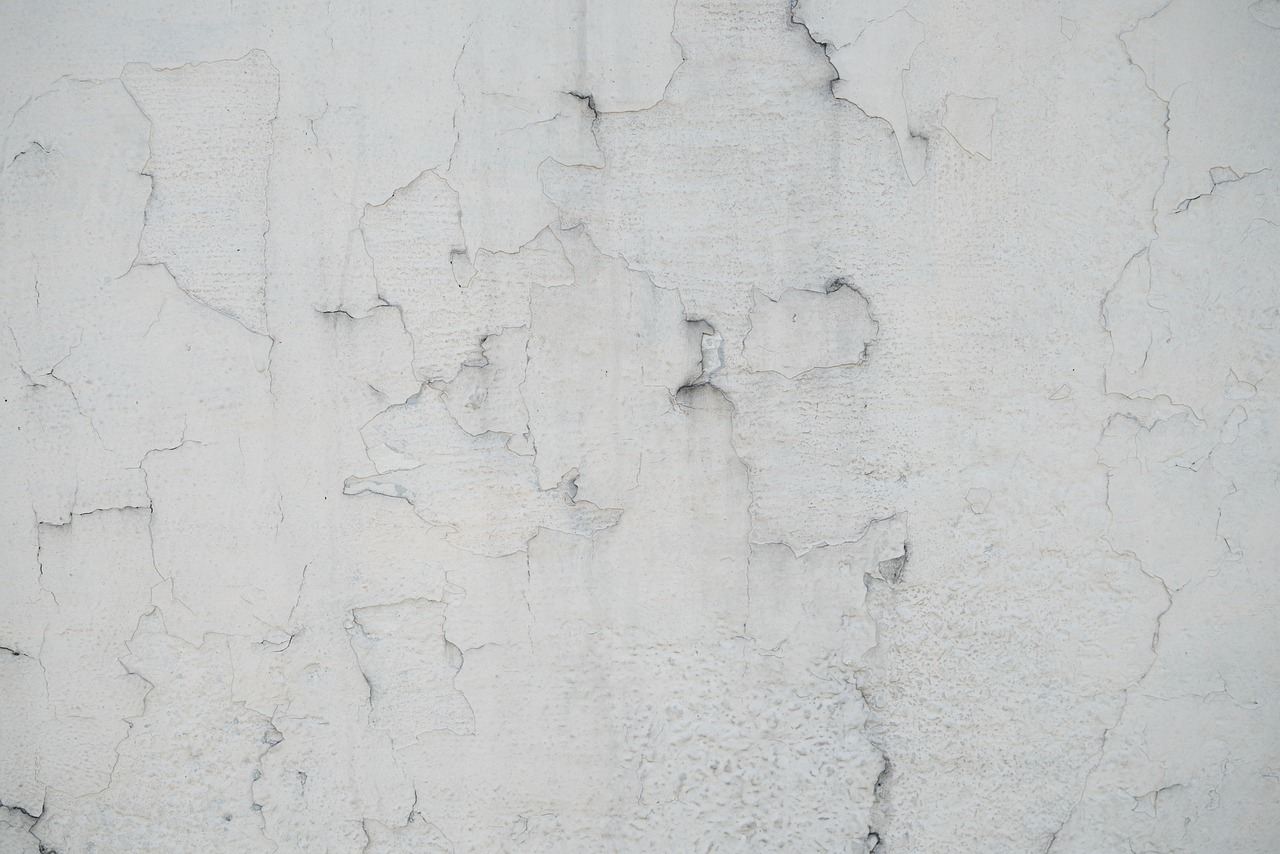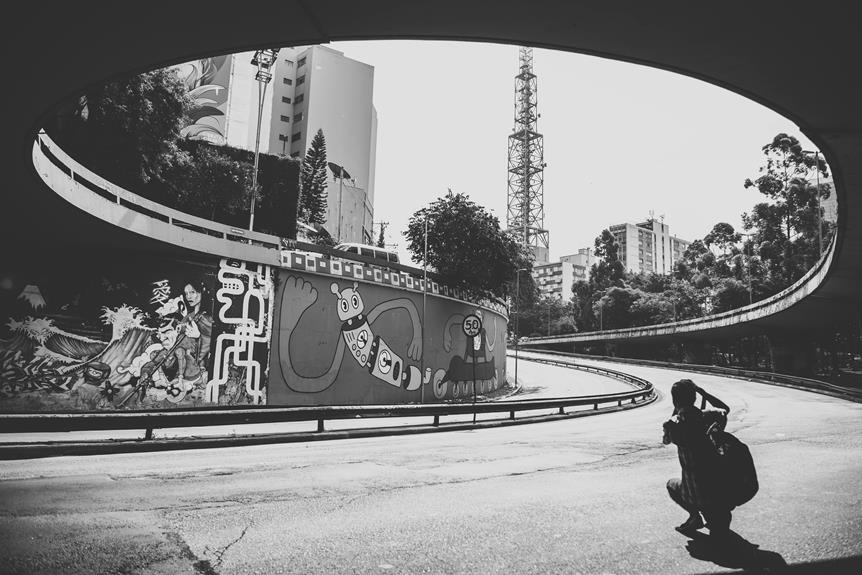Minimalist Art

Minimalist art emerged in New York in the early 1960s, guided by artists like Donald Judd and Frank Stella. This movement shifted attention from the emotional intensity of abstract expressionism to focus on basic forms and raw materials. Artists like Sol LeWitt and Dan Flavin used geometric precision and balanced compositions to emphasize simplicity and clarity. By stripping away the superfluous, minimalist art redefined aesthetic norms and influenced movements such as minimalist architecture. Its legacy continues to challenge contemporary artists to embrace simplicity and conceptual depth. Explore how this stripped-down yet profound approach impacts today’s art world.
Key Points
- Minimalist art emerged in New York during the early 1960s, focusing on basic forms and raw materials.
- Key minimalist artists include Donald Judd, Sol LeWitt, and Dan Flavin, who defined the movement with geometric precision and conceptual approaches.
- Minimalist art emphasizes simplicity, clarity, and balanced compositions, often using geometric shapes and industrial materials.
- The movement had a significant cultural impact, influencing minimalist architecture and fostering new art movements.
- Minimalist principles challenge contemporary artists to embrace simplicity and continue to shape modern artistic practices.
History of Minimalist Art
Minimalist art, which emerged in New York during the early 1960s, was led by forward-thinking artists like Donald Judd and Frank Stella who sought to redefine the boundaries of visual arts.
The evolution of minimalism reflected a shift from the emotional intensity of abstract expressionism to a focus on simplicity and objectivity. This movement influenced various forms, including minimalist architecture, where clean lines and functional designs became prominent.
Minimalism in music paralleled this visual shift, emphasizing repetition and gradual change. Minimalist sculpture, characterized by its use of industrial materials and geometric forms, further solidified the movement’s principles.
Influential exhibitions like Primary Structures in 1966 played a vital role in shaping public understanding and acceptance of minimalist art.
Key Characteristics
At its core, minimalist art embodies purified beauty, emphasizing truth, order, simplicity, and harmony through the works of artists like Sol LeWitt, Donald Judd, and Carl Andre. Minimalist art employs artistic techniques that focus on geometric forms and monochromatic palettes, stripping away any excess. Its cultural influence extends to minimalist architecture, where the same principles create serene spaces. Contemporary interpretations of minimalism maintain these characteristics, reflecting a timeless appeal.
| Key Characteristic | Description |
|---|---|
| Simplicity | Focus on basic forms |
| Truth | Materials in raw state |
| Order | Geometric precision |
| Harmony | Balanced compositions |
| Cultural Influence | Minimalist architecture |
Influential Artists
Exploring the domain of minimalist art, one can’t overlook the profound impact of influential artists like Donald Judd, Sol LeWitt, and Dan Flavin, whose works encapsulated the movement’s core principles. Their artistic influences and cultural significance are undeniable.
Judd’s box forms distilled Minimalism into its essence.
LeWitt’s conceptual art, emphasizing ideas over execution, and Flavin’s innovative techniques using fluorescent lights, showcased creative expressions within the movement.
Here are three key points to remember:
- Donald Judd – Defined Minimalism through recognizable box forms.
- Sol LeWitt – Prioritized conceptual art, focusing on the idea rather than physical execution.
- Dan Flavin – Used fluorescent light fixtures to create light-filled landscapes.
These artists’ contributions collectively shaped the minimalist art landscape.
Impact and Legacy
The enduring influence of minimalist art challenges contemporary artists to embrace simplicity and conceptual clarity in their work. This movement’s cultural influence and contemporary relevance push creators to strip away excess, focusing on the essence of their artistic vision.
Minimalist art catalyzed an artistic evolution, redefining aesthetic norms and fostering new art movements centered on purity and harmony. The social impact is profound, as minimalism encourages reflection on identity politics and social issues through a distilled lens.
Artists like Donald Judd, Dan Flavin, and Sol LeWitt solidified minimalism’s legacy, inspiring subsequent generations. Today, minimalist principles continue to guide artistic practices, proving that less can indeed be more in the quest for truth and beauty.
Minimalist Art Forms
Minimalist art forms, characterized by their focus on simplicity and clarity, challenge artists to distill their work to its most fundamental elements. Modern interpretations and contemporary influences have broadened this genre, incorporating:
- Conceptual Art: Prioritizes the idea behind the work, echoing minimalist principles.
- Trendy Prints: Utilizes minimalist design for accessible, stylish decor.
- Gallery Walls: Features clean, simple designs that enhance any space.
Emerging trends and global perspectives continue to evolve minimalist art, making it a dynamic field. This approach breaks elitist barriers, promoting wider accessibility and enjoyment. By emphasizing purified beauty and harmony, minimalist art resonates universally, inspired by Russian constructivist and suprematist movements, yet always adapting to contemporary tastes.
Frequently Asked Questions
What Defines Minimalist Art?
You define minimalist art by its principle that “form follows function,” emphasizing space utilization. It strips away excess, focusing on simplicity, order, and harmony to highlight the essence of the artwork, challenging traditional structures.
What Is the Focus of Minimalist Art?
You should focus on minimalist art’s cultural impact and historical context. It emerged in the 1960s, challenging existing norms by emphasizing simplicity and accessibility. This movement aimed to democratize art, making it understandable and enjoyable for everyone.
What Makes a Minimalist Painting?
A minimalist painting is defined by its limited color palette and the strategic use of negative space. You’ll notice clean lines and geometric shapes, focusing on simplicity and essential forms that invite deep contemplation and reflection.
How Do You Make Minimalist Art?
To make minimalist art, focus on color choice and employ simple shapes. Choose neutral colors and geometric forms. Carefully consider composition, balance, and negative space. Aim to evoke emotions and provoke thoughts with your minimalistic approach.
Conclusion
You’ve now explored the essence of minimalist art, from its historical roots to its defining characteristics and influential artists.
This movement’s impact is undeniable, shaping modern art and design in profound ways.
By stripping away the non-essential, minimalist art invites you to engage deeply with simplicity and form.
Its legacy continues to inspire artists and audiences alike, proving that sometimes, less truly is more.
Author: Jessica Hartley

